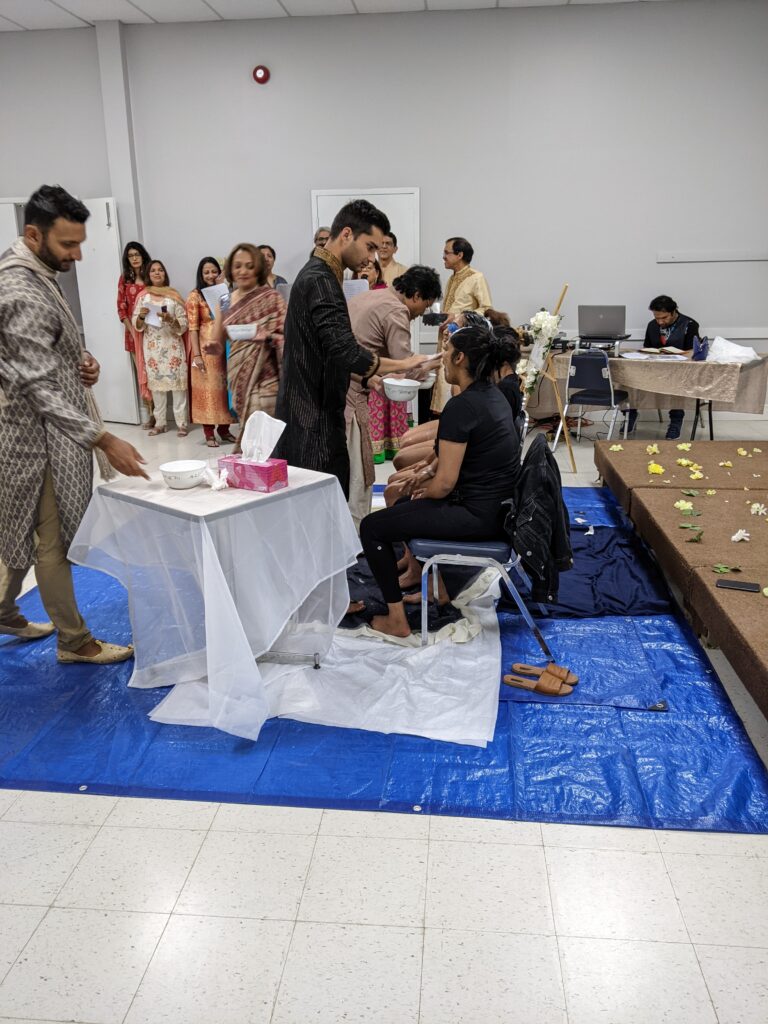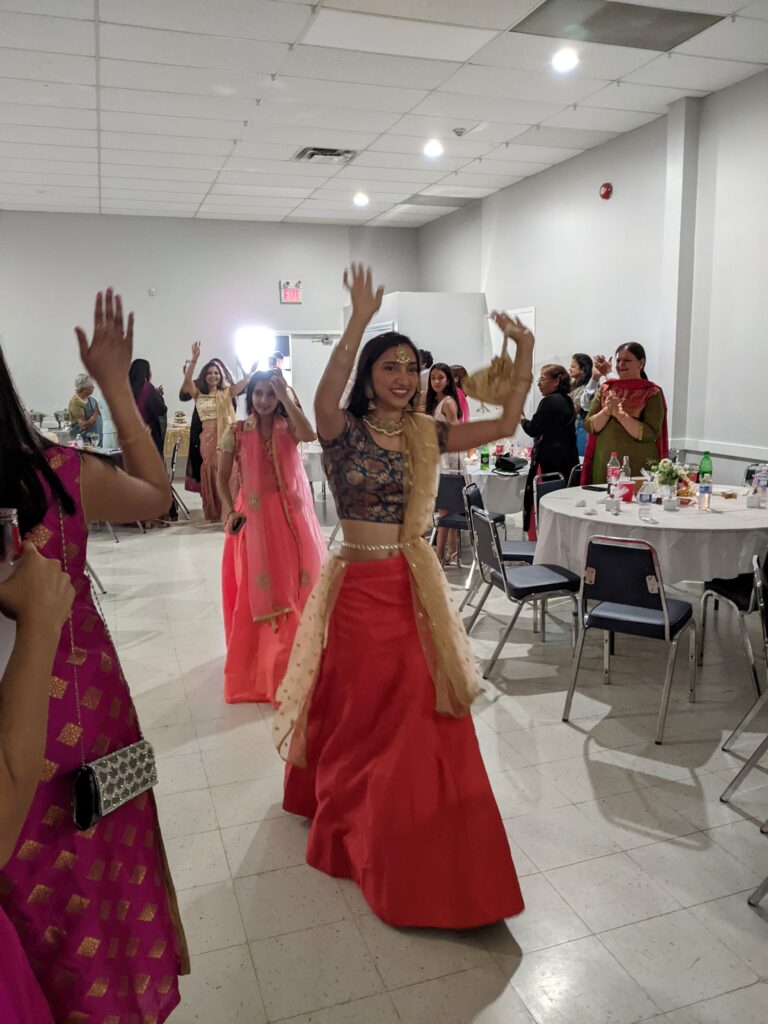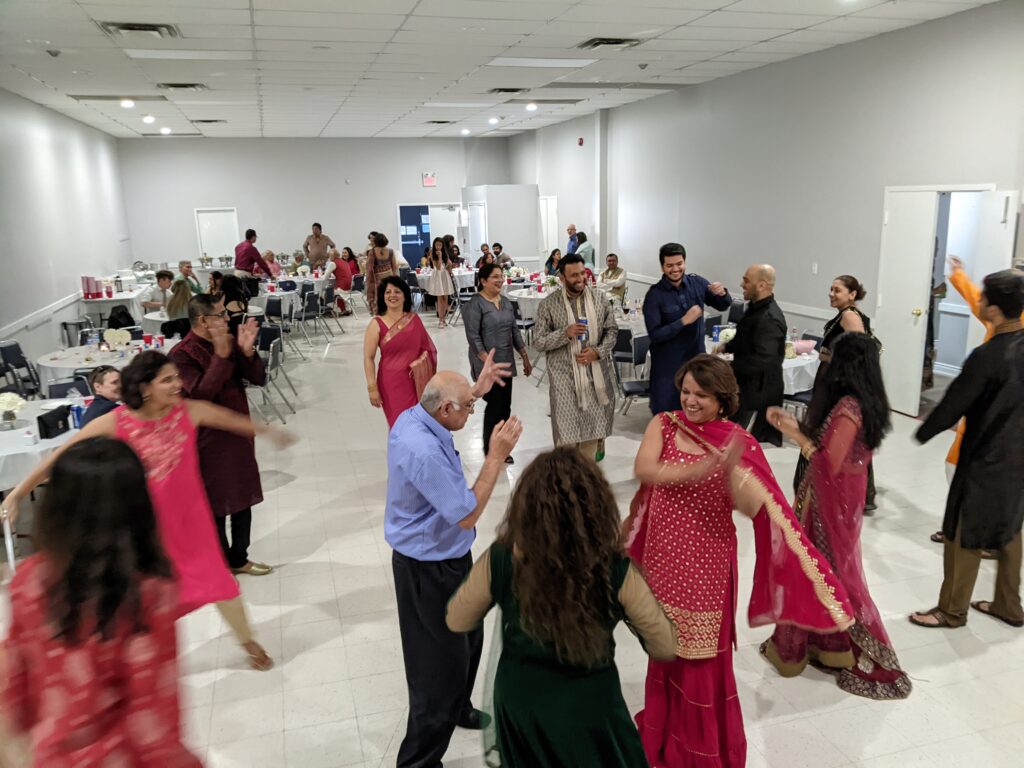Roce Ceremony at an Indian Wedding

Roce ceremony is a ritual of an Indian wedding.
I love Indian weddings. The reason is that no Indian wedding is similar. There are Punjabi, Hindu, South Indian, Goan, Gujarati, Parsi, and Manglorean weddings. Each wedding has its own rich rituals embedded deeply in cultural traditions that have special connotations and spiritual meaning. The traditions are passed down from generation to generation to connect couples to their ancestry.

I was recently invited to Meira Dholakia’s Roce ceremony. The Roce ceremony is the Mangalorean/Goan Catholic equivalent of the Hindu Mehendi (Henna) or the Haldi (Turmeric) ceremony. The Roce ceremony is the most crucial and paramount pre-wedding custom in the Mangalorean Catholic community. Roce means juice. The freshly squeezed coconut milk is the main part of the ceremony.
Why is coconut milk used and what is the significance? Goa and Karnataka lie on the coastline of India. Coconut is an intrinsic, requisite, and indispensable part of the community. Roce represents purity and immaculate just like the white coconut milk. Coconut milk is a gift from God. The Roce ceremony is to show the reverence for God and our belief and credence in him. Oil is also used to imitate the Biblical era as leaders and kings were anointed with oil. The oil is also applied to Meira to bless her and to present her purity and holy to her groom. The Roce ceremony is a notable and profound purification rite to prepare Meira as she starts a new life.
The Roce ceremony is conducted by a female elder of the family also called the yejman. She explains the details of the ceremony and its significance. Meira and the bridesmaids are seated. On their left are the bowls of coconut milk and oil. A scripture from the Bible is read.

Meira is wearing the kirgi. It is Sapphire’s wedding saree, wrapped around the waist with a plain cotton blouse.
The women now start singing the voviyos. These are traditional wedding songs of the Mangalorean Christian community focusing on the ethics, goals, principles, values, and morals of the community, the respect for elders, and the deep belief and respect for God.
Sapphire the mother of the bride is the first to apply the roce and oil on Meira. Sapphire makes a sign of the cross on Meira’s forehead. She also touches Meira’s ears with the oil to represent that she has a clear ear to listen to and understand her husband. Sapphire now takes the coconut milk and pours it on Meira’s head. Anuroop the father now blesses Meira.

Sapphire shares a few words of wisdom and invites the elders, family, and friends to bless the bride.


Finally, it is my turn to bless the bride. I am overwhelmed with emotions. When a daughter of a close friend gets married, you feel like your own daughter is getting married. All the cousins and friends have thrown enough oil and coconut milk over the girls. I am here to bless them. I bless her and wish her all the best.

Meira leaves along with the bridesmaids to go and have a shower. They come back and are ready to party.


I love the colors and vibrancy of the various clothes, the embroidery, and the gold lacing.

Now comes the favorite part. The buffet. Rice pilaf, black gram curry, chicken curry, vegetables, and naan. Did I mention desserts? I helped myself to a few desserts.
The Roce ceremony took place on a Sunday. The wedding reception was on Friday. There were many speeches. One sentence that Meira mentioned stood out to me. She said she wanted a destination wedding. She attended her cousin’s wedding in New Zealand and finally realized she wanted a wedding with all the customs and rituals.
I was so impressed with the Roce ceremony. I saw how close the family is. Family members came from New Zealand, U.S., and India.
In a fast post-modern world, it is important to maintain these traditions in our wedding ceremonies. They are symbolic enactment of important facets of married life. It gives the whole process meaning. It creates memories and has cultural significance. The cultural and religious symbolism is woven into the tapestry of our lives and we remain connected.

